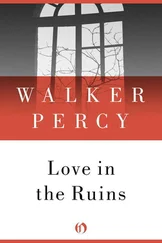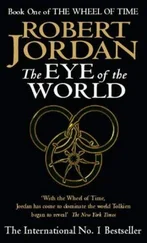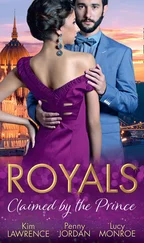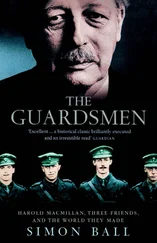In his 27 August 1802 reply, Banks confirmed that Sproat’s remarks on cochineal gave him ‘particular pleasure’ because it seemed very likely that the real cochineal and the cactus could be procured from Guatemala and sent to India.[74] If Sproat was ‘inclined to undertake this patriotic task’ – which looked possible without ‘any hazard of loss to yourself’ – Banks would make him a generous settlement: £500 on receipt of the cactus plants in London; £1000 for the delivery of healthy cochineal; and a further £1000 for the delivery of both insect and plant to India. Banks provided Sproat with a condensed version of his instructions on how to keep the cochineal and the cactus alive on a sea voyage, with the added incentive of a gratuity for the ship’s captain ‘proportioned to the state of health in which either Plants or Insects arrive’. Finally, it was up to Sproat to try and entice one or two local people skilled in nopalry and cochineal cultivation to care for both all the way to India and then to stay or be sent home if they so wished.
The letter to Sproat showed Banks at his most excited. ‘I need only add’, he remarked towards the end of the letter, ‘that as I who am constantly employed in the execution of projects of this nature without ever having accepted remuneration in any shape have not the slightest view to advantage in this.’
As it turned out, nothing further seems to have happened. Did Sproat receive Banks’s letter? Was he alive? Did he decline the offer? We don’t know. All we do know is that the East India Company kept offering a £2000 reward for the ‘importation of the cochineal insect from South America’, but there were no takers.
As time went on the Company lost interest, and the dream of Oaxacan cochineal in India died.[75]
PART II
By 1786 Joseph Banks had been President of the Royal Society for eight years – he would continue being elected annually until his death in 1820. It was a position which gave Banks enormous prestige not only in Britain’s scientific community but also further afield. Over the following five years, Banks became a member of at least fifteen other scientific societies, some of them modelled on the Royal Society, some new, some well established, and stretching from Philadelphia to St Petersburg. Banks was now in touch with many of the world’s scientific practitioners, not only those interested in natural history, but ranging over all fields of scientific enquiry. His correspondence files grew accordingly.
Enlightening as it was, and satisfying as it must have been to be fêted by so many scientific institutions, it was Banks’s botanical projects which continued to dominate his attention. By 1786, his first collectors were either in the field or on their way. Francis Masson was at the Cape, on his second visit there, collecting living plants for Kew; Anthony Pantaleon Howe was in southwest Africa on HMS Nautilus ; Archibald Menzies was on his way to the Pacific Northwest; John Duncan was already sending plants to Banks and presents to his wife Dorothea from Canton; and on the Coromandel Coast, James Anderson had written his first letter to Banks about his discovery of cochineal.
The tables and other surfaces in the library at Soho Square must have been covered with all the available texts, drawings and maps of the places where his collectors were, as Banks envisioned what they may have been experiencing. And, all the time, plant specimens were arriving, sometime at Soho Square, if, as seeds, they were in envelopes addressed to Banks; and, other times, at Customs House, if they were bulbs or living plants, needing clearance before being sent to Kew.
The geographic scope of these collections was already wide but over the next few years they spread out even further. Howe (now called Hove), who had returned from southwest Africa, was sent to western India on a secret mission; and Menzies, who had left Canton for London, would soon be on his way back to the Pacific as part of a naval convoy, commanded by George Vancouver, who had been on both Cook’s second and third voyage, to keep the delicate recently negotiated peace between Britain and Spain and to continue Cook’s survey of the Pacific coast. Menzies was mainly collecting living plants for Kew, but he also collected botanical specimens and planted seeds given to him in England and at the Cape whenever and wherever he could.
In addition to all this, Banks became involved with three other government-initiated projects before 1791. The first focused on establishing and sustaining Britain’s new penal colony in New South Wales. The second and third projects were concerned with transplanting the breadfruit tree from Tahiti to the British West Indies on specially converted naval vessels.
Banks’s experiences on the Endeavour , now more than a quarter of a century in the past, were still being called upon, and he took all the opportunities that the government projects presented him with to further his own personal project of supplying Kew with living plants from all over the world, on an unprecedented scale.
6
1786: The First and Second Fleet
The extremely disappointing report from HMS Nautilus put paid to the idea of forming a convict settlement on the southwest coast of Africa and paved the way for Botany Bay as the only feasible alternative. Banks, who had so far merely recommended it as a suitable spot for a colony, soon found himself involved in planning the practical details of its day-to-day existence. This was not through the government, but because of Banks’s relationship with yet another of his acquaintances who was interested in natural history, Arthur Phillip. This was Captain Arthur Phillip who was to be the first Governor of New South Wales. He was born in 1738, and so five years older than Banks, and had been at sea since he was nine. First in merchant ships, and then in the Royal Navy, he rose quickly through the ranks. Early in the 1770s, Phillip went on half-pay, and spent some time in France, possibly spying for the British.[1] By 1774 he was back in London, but not for long. Soon he was sent to Lisbon. By mid January 1775 he was a captain in the Portuguese Navy for service in Brazilian waters. The Portuguese had asked the British for naval assistance and Phillip had been recommended. He was described to the Portuguese authorities as highly intelligent, an astute and accurate observer, with extensive naval and military expertise, fluent in French, and other European languages. Phillip was the perfect man for the job.[2]
He was. He stayed with the Portuguese Navy for three years. During this time in Brazil, he was surprised to learn that a colony of cochineal insects had been found living on cactus plants on the Brazilian island of Santa Catarina, the southern naval base between the towns of Santos and Porto Alegre; and the Viceroy of Brazil, the Marquis de Lavradio, had ordered production to be expanded to the point at which Brazilian cochineal could be exported and compete with the Spanish monopoly.[3]
Phillip already knew something about the making of cloth – his wife’s first husband had been a very prosperous cloth merchant and Phillip himself had spent several years in and around the cloth cities of northern France.[4] The valuable cochineal naturally attracted his attention and he became very interested in understanding the insect’s behaviour. While stationed at the island, he actually bred the insects in his cabin and observed their life cycle. Unfortunately, while on patrol in the River Plate, much colder than on Santa Catarina, all the insects died. Nevertheless, Phillip had learned enough about their behaviour to be confident that the insect and the cactus could be transplanted to one of the British islands in the West Indies where the tropical climate would provide the right conditions: and the insect could be ‘bred to the great advantage of the Nation, as well as to the very great profit of the Planter.’[5] Phillip’s cochineal experience would come in very useful later on.
Читать дальше












